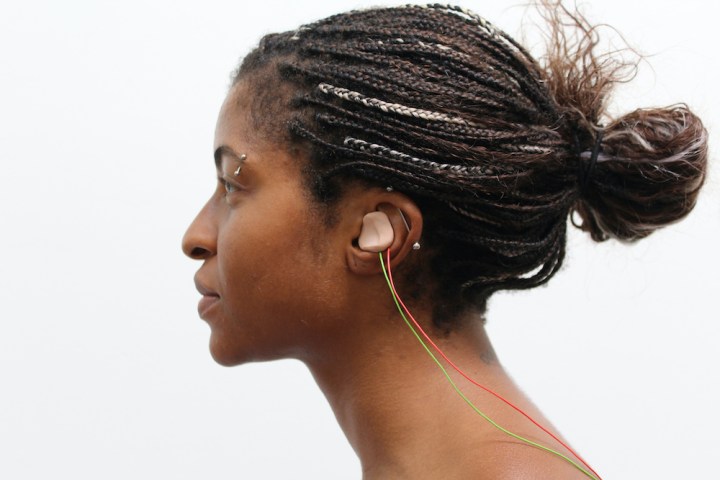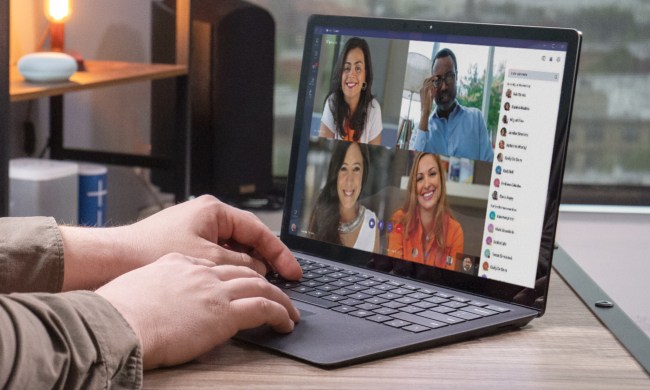
You’ve probably heard of language translation earbuds that are capable of translating spoken words into a language of your choice in real time. But what if someone created a pair of earbuds that went one step further and actually helped you to better learn new languages, even in your adulthood, when you wear them?
It might sound far-fetched, but it’s not. Prototypes of such devices, which work by electrically stimulating a major nerve leading up to the wearer’s brain, are the result of years of investigation from top researchers. And while they’re not quite ready for prime time, they’re certainly far from science fiction.
“I’ve always loved learning languages,” Matthew Leonard, a cognitive neuroscientist at the University of California, San Francisco, told Digital Trends. “[But] like most people, it’s something that I find incredibly challenging. Over the last 15 years, my main work as a neuroscientist has been focused on understanding how the brain processes speech and language, including in bilinguals, who somehow manage to hold two or more languages in one brain.”
Leonard’s work led him to explore the documented use of direct brain stimulation in neurosurgery patients to try to understand the function of specific brain regions during language processing. This, in turn, led to an incredibly promising experiment, the results of which are described in a paper published this month in the journal npj Science of Learning.
“We found that by timing the stimulation to specific moments while native English speakers were learning Mandarin Chinese speech sounds, we could improve their performance.”
Carried out in the lab of Bharath Chandrasekaran, a professor in the Department of Communication Science and Disorders at the University of Pittsburgh, the demonstration shows how this approach could help learners acquire the sounds of a new language unfamiliar to them.
In the study, a group of 36 participants were fitted with a custom ear mold holding Transcutaneous Vagus Nerve Stimulation (tVNS) electrodes, along with head-mounted electrodes for recording brain waves. They were then asked to listen to speech sounds in Mandarin Chinese, one of the hardest languages for Westerners to learn, as well as the world’s most widely spoken native language. The participants were tasked with pressing a button to indicate which sound they were hearing.
“At first, they just had to guess, but using the behavioral paradigm that Bharath and his team have developed, they received feedback that allowed them to improve their guesses,” Leonard said. “While all of that is happening, we’re also stimulating the vagus nerve noninvasive using the earbud electrodes, with stimulation timed precisely to certain sounds participants were supposed to be learning.”
Vagus nerve stimulation (and its discontents)
Vagus nerve stimulation (VNS) is a technique that has been used for more than 20 for treating a variety of conditions. It was originally approved for the treatment of epilepsy, but over the past several years researchers have started applying VNS to applications that range from depression to inflammatory disease. Such different applications are possible because the vagus nerve, which carries signals from the digestive system and organs to the brain and vice versa, connects so many different systems within the body.

Stimulation is carried out by sending regular, very mild pulses of electrical energy to the brain via the vagus nerve, using a device that’s a bit like a pacemaker. These pulses are so mild that they are not typically noticed by the patient. This latest demonstration is the first time that VNS has been used for language learning. Unlike regular VNS techniques, the earbud-style electrodes developed by the researchers in this study were able to stimulate a part of the vagus nerve accessible through the ear without requiring an invasive implant, making the technology far more accessible.
“While I don’t think just wearing our device for a few hours a day can make someone fluent in another language, it may provide enough of a bump to get people over some of the difficult hurdles during the learning process.”
“Language learning in adulthood is a classically difficult task,” Leonard said. “We found that by timing the stimulation to specific moments while native English speakers were learning Mandarin Chinese speech sounds, we could improve their performance by up to 13%, compared to participants who didn’t receive stimulation. Much to our surprise, we found this effect when participants couldn’t tell whether or when they were being stimulated. And furthermore, that the largest boost happened with just a few minutes of this below-threshold stimulation.”
Twelve of the participants in the experiment did not receive any nerve stimulation at all, thereby serving as a control group to prove the efficacy of the teaching technique.
Coming soon to an ear near you
Leonard said that he is excited by the suggestion that a simple, cheap, and safe neuromodulation device such as this could help “level the playing field” for people wanting to learn a second language. Chandrasekaran, meanwhile, pointed to the potential rehabilitation implications of such a device. Although this study focused on healthy individuals learning a new language, Chandrasekaran thinks it could also help people trying to “relearn” language after suffering a stroke or brain damage. “Our next goal is to identify the optimal set of parameters that may assist in neuro-rehabilitation of language,” Chandrasekaran told Digital Trends.
No, technology such as this isn’t going to mean you can ditch the Duolingo subscription or the need to, you know, actually interact with other language speakers in order to learn a new language. It’s not magically inserting a new language into your brain like a skill uploaded in The Matrix (“I need languages. Lots of languages.”) But helping people better recognize particular language sounds is an important step toward understanding. If it’s no miracle worker for picking up new languages, it could certainly help bring the rest of us up to the level of those lucky “super learners” who can seemingly pick up a language in next to no time.
“While I don’t think just wearing our device for a few hours a day can make someone fluent in another language, it may provide enough of a bump to get people over some of the difficult hurdles during the learning process,” Leonard said.


